Experiencing the Web of Life

“Our presence here (in space), outside the domain of the home planet, was not rooted in an accident of nature or in the capricious political whim of a technological civilization. It was rather an extension of the same universal process that evolved our molecules. And what I felt was an extraordinary personal connectedness with it. I experienced what has been described as an ecstasy of unity. I not only SAW the connectedness, I FELT it and experienced it sentiently. I was overwhelmed with the sensation of physically and mentally extending out into the cosmos.”
–Edgar Mitchell (American Scientist, Apollo 14 Astronaut and Founder of the Institute of Noetic Sciences, 1930-)
Every Soul if Sacred

“For God, every soul is sacred and blessed and always God’s child; the soul may forget its home and inheritance and identity, but God never forgets and acts in thousands of secret and overt ways to remind the soul of its real nature.”
–Andrew Harvey (Indian-born English Philosopher, 1952-)

Mystic Unity

“The Unity is ever drawing to itself and inviting to itself everything that has been born of it.”
–John Ruysbroeck (a.k.a. Jan van Ruusbroec, Dutch Roman Catholic Mystic, 1293-1381)
Art Is The Science of Human Destiny
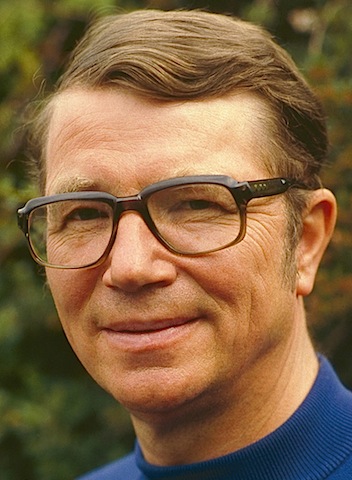
“Art is naturally concerned with man in his existential aspect, not in his scientific aspect.
For the scientist, questions about man’s stature and significance, suffering and power, are not really scientific questions; consequently he is inclined to regard art as an inferior recreation.
Unfortunately, the artist has come to accept the scientist’s view of himself. The result, I contend, is that art in the twentieth century — literary art in particular — has ceased to take itself seriously as the primary instrument of existential philosophy. It has ceased to regard itself as an instrument for probing questions of human significance.
Art is the science of human destiny.
Science is the attempt to discern the order that underlies the chaos of nature; art is the attempt to discern the order that underlies the chaos of man. At its best, it evokes unifying emotions; it makes the reader see the world momentarily as a unity.”
–Colin Wilson (English Novelist and Writer on Philosophy, Sociology and the Occult, 1931-)
“The Strength to Dream: Literature and the Imagination” (Colin Wilson)
Self-Actualization
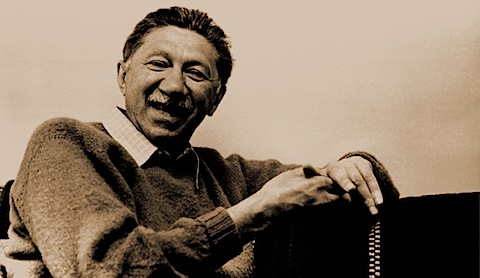
“Something of the sort has already been described for the self-actualizing person. Everything now comes of its own accord, pouring out, without will, effortlessly, purposelessly.
He acts now totally and without deficiency, not homeostatically or need-reductively, not to avoid pain or displeasure or death, not for the sake of a goal further on in the future, not for any end other than itself.
His behavior and experience becomes per se, and self-validating, end-behavior and end-experience, rather than means-behavior or means-experience.
At this level, I have called the person godlike because most gods have been considered to have no needs or wants, no deficiencies, nothing lacking, to be gratified in all things. The characteristics and especially actions of the “highest,” “best” gods have then been deduced as based upon not-wanting.”
–Abraham H. Maslow (American Psychologist, 1908-1970)

Breathing The Breath of Life
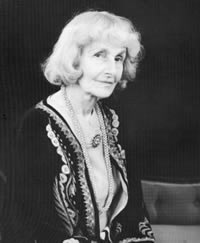
“Everyone should breathe in the divine Breath of Life with all his heart and sing his song of thanksgiving no less regularly than do the birds.”
–Vera Stanley Alder (English Painter and Mystic, 1898-1984)

The Constantly Explosive Dance
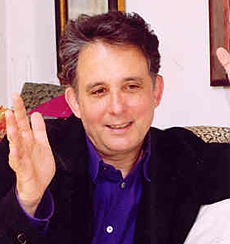
“Reality [is] one constantly explosive dance of divine energy, love, and bliss, interconnected in all of its events and particulars.”
–Andrew Harvey (Indian-born English Philosopher, 1952-)

Seeing Your Life As It Truly Is
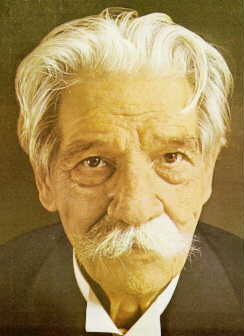
“Your life is something opaque, not transparent, as long as you look at it in an ordinary human way. But if you hold it up against the light of God’s goodness, it shines and turns transparent, radiant and bright. And then you ask yourself in amazement: Is this really my own life I see before me?”
–Albert Schweitzer (Alsatian-born Theologian, Philosopher, Mission Doctor and, in 1952, Winner of the Nobel Peace Prize, 1875-1965)
Lucid Dreaming
Stuart Wilde reprinted a very nice article on lucid dreaming on his website. I found the original here. Sadly the author remains anonymous, so I cannot give an attribution. Since there are some page references, I imagine that it is form a book, but not one in my fairly extensive library.
This is such a good article that I am reproducing it below. If the author contacts me I shall let you know who he or she is!
I have been collecting books and articles on lucid dreaming for many years, ever since an early teacher told me that according to some old teachings, learning the art of lucid dreaming is supposed to make it easier to control the transition at the time of death.
If that is too esoteric for you, then I should also mention that lucid dreaming is being explored as a treatment for nightmares.
One of the best books that I know of is by Stephen LaBerge and Howard Rheingold, and it is now available for download here.
Here is the article, with a couple of links that I have added to clarify a couple of points.
If you have reached a stage at which it feels right to be working with your dreams, I hope that this will be of value to you.
__________________________________
INTRODUCTION: WHAT IS LUCID DREAMING?
Lucid dreaming is a state in which the sleeper becomes alert and conscious that he or she is dreaming. The imagery in this state is reported to be more vivid than in non-lucid states, and it is difficult to distinguish between the dream and reality. The dreamer is able to control what is dreamed.
Lucid dreaming has formed the central core of virtually every shamanic and mystical practice throughout history. It allows the shaman to visit the spirit realms to gain healing power and insight. In the East, lucid dreaming has long been seen as a signpost on the way to enlightenment.
The Goldi shamans of Siberia guide dying or dead subjects through the realms of the otherworld through lucid dreams. Native Americans rely upon conscious dreaming for their vision quests, and consider dreams to be central to life itself, and the foundation of all spiritual matters.
The Australian Aborignes are the oldest lucid dreamers, but the Tibetan shamans have carried the process of lucid dreaming more exactly into the realm of mysticism. In 12th century Tibet there arose famous schools of Dream Masters who appeared to use lucid dreaming as a powerful method of meditation, which was reported to speed up the process of enlightenment. The Tibetan shaman was always "chosen" through a lucid dream, which transformed the dreamer into a new being.
Many Western subjects entering lucid dreaming for the first time report experiencing nothing comparable in the whole of their waking lives, feeling as if they had been radically changed by the event and mysteriously transformed. The essential purpose of lucid dreamwork is ultimately to wake up. Lucid dreaming helps us understand that we are just as asleep when we think we are awake, as we are in dreams.
PART ONE: Brain States
The sleep cycle is made up of numerous clearly definedstages. The first is a transitional state called the hypnagogic, which is the feeling of floating off, sometimes accompanied by vivid or psychedelic images. At this point the brain is in alpha, which then gives way to the slower and more rhythmic theta waves of light slumber. These are joined by rapid bursts of brain activity (spindles and K-complexes). About 20 minutes after the beginning of the sleep cycle, the large and relatively slow delta waves take over. This is the deep plunge into the void of sleep.
The quiet phase and the active phase are the two main stages of sleep, and can be distinguished by differences in biochemistry, physiology, psychology, and behavior. The quite phase occurs during deep sleep and is known as "S" sleep, as it is characterized by slow wave EEG. This Delta pattern takes up most of our sleeping time, thus the "S". It is the state of restful inactivity, your mind does little while you breathe slowly and deeply; your metabolic rate is at a minimum, and growth hormones are released facilitating restorative processes. When awakened from this state, people feel disoriented and rarely remember dreaming
However the second type of sleep pattern, REM (rapid eye movement) is the sleep state that pertains to lucid dreaming. REM sleep or "D" sleep is characterized by rapid eye movements and is often accompanied by dreams, thus the D. The first episode of REM or D sleep in adults lasts about ten minutes but can increase to as much as an hour throughout the night. During REM sleep your eyes move around rapidly, breathing is quick and irregular, and you dream vividly. During this activity, your body remains still, because it is temporarily paralyzed during REM sleep to prevent you from acting out your dreams.
The length of REM periods increase as the night proceeds, and the intervals between REM periods decrease. The first REM period usually lasts about ten minutes, after with the sleeper almost awakens before stage two. The cycle is then highly variable with each individual. Usually the complete REM/non REM cycle lasts about 90 minutes, with the dreamer experiencing four to five cycles of sleep each night. During the last two hours of sleep the REM has increased from ten minutes to as much as one hour.
Therefore "dreaming sleep" accounts for as much as 20 percent of our sleeping life. We spend as much as five years in dreamworlds, and experience over 150,000 dreams in a lifetime. During the last several decades, sleep researchers have discovered that for every 100 persons in REM sleep, over 80 percent will remember a dream if awakened. REM is clearly a unique brain state, though it is similar to the waking state in EEG activity. This may explain why dreams seem so real.
While other structures in the brain are involved in sleep, the neocortex is a major brain area involved in the production of dream images and experiences.
PART TWO: How to Induce a Lucid Dream
a) How to schedule your efforts for best results
Most lucid dreams happen in the late morning hours of sleep. If you normally sleep for eight hours, you will probably have six REM periods with the last half occurring in the last quarter of the night. The probability of having a lucid dream in the last two hours of sleep is more than twice as great as the probability of having a lucid dream in the previous six hours.
If you are serious about lucid dreaming, you should arrange at least one morning a week where you can stay in bed several hours longer than usual. If you can’t afford more time in bed, there is a simple secret to increasing your lucid dreaming that requires no extra sleep.
If you are serious about lucid dreaming, you should arrange at least one morning a week where you can stay in bed several hours longer than usual. If you can’t afford more time in bed, there is a simple secret to increasing your lucid dreaming that requires no extra sleep.
b) Techniques for Lucid Dreaming
Carlos Castaneda is instructed in one of h
is books that the best way to have a lucid dream is to shift the attention while dreaming. His teacher advises him to look for his hands or feet during the dream, which will help him remember that he is dreaming, and have access to using his dream body. The technique does work, although it may take many trials before a person actually remembers to look at the hands or feet while they are dreaming.
Training Protocol for Lucid Dreaming.
Should be practiced each night before going to sleep.
1. Play relaxing music on low volume. Lie down and close eyes. Lie on left side if comfortable, if not, gently touch forefinger to thumb of each hand and let hands rest by side.
2. Listen to tape and do some deep breathing (Noise Removal Breathing p.87 & Level One Breathing p.86).
3. Imagine and feel a point of white light in middle of forehead. Sense it radiating its light in front of the brain and directly in front of you.
4. Imagine and feel you are walking along a deserted beach at twilight. Notice the sky, moon, stars. As you walk, sense the point of white light on forehead, look down at hands and feet. Rotate hands and look at them in the light of the moon and stars.
Next, imagine you reach the entrance to an underground cave. Walk down seven stairs, reach out to open the door and look at hand. Walk into a cavernous room with many doors. Atmosphere of calmness and peace.
You will find yourself drawn to one of the doors. Know that your chosen door holds something of value behind it. As you walk towards the door, feel the point of light, and glance down at the hands and feet. When you open the door, look at your hand. Enter the next room and explore everything – the people or beings you find there may be metaphorical. You may talk to anyone. As you explore, occasionally glance at hands or feet and feel the point of white light on the forehead.
After exploring the room, return to the first room and the entrance that leads to the stairs. Open the door and walk to the beach. Bring awareness back to physical body, and slowly open eyes.
Preparation for Lucid Dreaming
1. Lie on left side if it feels comfortable as above.
2. Close eyes, deep breathing (or Level One Breathing).
3. Imagine point of white light in forehead.
4. As your awareness rests on this point, say to yourself silently: "I intend to have lucid dreams tonight. I recognize when I am dreaming and I am able to move freely in my dream body." (Can use any similar statement).
5. Continue to keep mental focus gently at point of light in the middle of forehead. When you feel yourself drifting off to sleep, let go of the focus.
You may change body position throughout the night. When you catch yourself dreaming, remember the point of light in forehead, and to look at hand or feet.
DREAM-INITIATED LUCID DREAMS (DILDs)
Critical State Testing: Ask yourself whether you are awake ordreaming throughout the day, so that you can get into the habit of asking the same question while you are dreaming. It is important to ask the question "Am I dreaming or not?" at least five to ten times a day, especially in situations that are dreamlike, or remind you of your dreams. It is also good to ask the question at bedtime. Don’t just automatically ask the question and mindlessly reply, "Obviously I’m awake," or you will do the same thing when you are actually dreaming. Look around for oddities that may indicate you are dreaming, and think back over the events of the past several minutes. If you had trouble remembering what happened, you may be dreaming.
State Testing: Don’t ask other people in your dream whetheryou are dreaming, because they will often reply that you’re not. The best way to check if you’re dreaming is trying to fly. Hop into the air, and if you stay there, you’re dreaming. You can also read something, look away and see if the text has distorted in any way when you look back.
Another method is to look twice at a digital watch, because they never behave correctly in dreams. Don’t use an analogue watch to check because they can tell dream time quite believably.
You may discover that any time you feel the genuine need to test reality, this in itself is proof enough that you’re dreaming, as when we’re awake we almost never seriously wonder whether we are in fact awake or dreaming.
Intention Technique:
1. Resolve to recognize dreaming – In the early hours of the morning, or if you wake in the night, clearly affirm your intention to remember to recognize the dream state.
2. Visualize yourself recognizing dreaming – Visualize yourself in dream situations that would normally make you realize you are dreaming.
3. Imagine carrying out an intended dream action – Resolve to carry out a particular action in a dream, e.g. see yourself flying, knowing that you are dreaming.
The Mild Technique – Mnemonic Induction of Lucid Dreams
Prerequisites: It is necessary to have or develop the ability to remember future intentions using your mental capacity only, rather than relying on external reminders such as lists.
MILD TECHNIQUE
1. Set up dream recall – Before going to bed, resolve to wake up and recall dreams during each dream period throughout the night (or when you wake up in the morning).
2. Recall your dream – When you awake from a dream period, no matter what time it is, recall as many details as possible from your dream.
3. Focus your intent – While returning to sleep, concentrate on your intention to remember to recognize that you are dreaming.
4. See yourself becoming lucid – At the same time, imagine that you are back in the dream from which you have just awakened, but this time you recognize that it is a dream. Find a dream sign (something odd or bizarre in a dream that alerts you to the fact that it’s a dream) and say to yourself, "I’m dreaming!" and continue your fantasy.
5. Repeat – Repeat steps 3 and 4 until your intention is set, then let yourself fall asleep. If your mind strays while you are falling asleep, repeat the procedure so that the last thing in your mind as you fall asleep is your intention to remember to recognize that you are dreaming.
Commentary – If it takes you a long time to fall asleep while practicing this method, don’t worry. The longer you are awake, the more likely you are to have a lucid dream when you eventually return to sleep. This is because the longer you are awake, the more times you are likely to repeat the MILD technique, and therefore reinforce lucid dreaming. If you are a very heavy sleeper, you should get up after memorizing your dream and engage in ten to fifteen minutes of any activity involving full wakefulness, ie. turn on light, read a book etc. Write down the dream and read over it, ooking for dream signs.
WAKE-INITIATED LUCID DREAMS (WILDs)
This involves falling asleep consciously.
Attention on Hypnagogoc Imagery – This is the most common strategy for inducing WILDs and involves focusing on the hypnagogic imagery that accompanies sleep onset, e.g. flashes of light, geometric patterns.
HYPNAGOGIC IMAGERY TECHNIQUE
1. Relax completely – Go through relaxation of every part of body, deep breathing etc.
2. Observe the visual images – Focus attention on the images that appear before the mind’s eye, watching how the images begin and end. Observe the images delicately, and allow them to be passively reflected in your mind as they unfold. Do not attempt to hold on to the images, just observe and let them pass. At first there will be a series of disconnected, fleeting patterns and images, which will eventually develop into scenes.
3. Enter the dream – When the imagery becomes a moving, vivid scenario, you should allow yourself to be passively drawn into the dream world. Do not try and enter the dream
scene. Be careful of too much involvement and too little attention, and don’t forget that you are dreaming now.
Commentary – Step 3 is the most difficult. The challenge is to develop a delicate vigilance, an unobtrusive observer perspective, from which you let yourself be drawn into the dream, rather than trying to participate in it yourself. Another risk is that the world can seem so realistic in the dream that it is easy to lose lucidity. A suggested prevention against this is to resolve to carry out a particular action in the dream, so that if you momentarily lose lucidity, you may remember your intention to carry out the action and regain lucidity.
TIBETAN WHITE DOT TECHNIQUE
1. Before bed
A) Firmly resolve to recognize when you are dreaming.
B) Visualize in the throat chakra the syllable "ah", red in color and vividly radiant.
C) Mentally concentrate on the radiance of the "ah". Imagine that the radiance illuminates everything in the world and shows it as being unreal or dreamlike.
2. At dawn
A) Practice deep breathing several times, rounding out the abdomen as you inhale.
B) Resolve eleven times to comprehend the nature of the dream state.
C) Concentrate on a dot of pure white situated between the eyebrows.
D) Continue to concentrate on the dot until you find that you are dreaming.
Commentary
According to yogic doctrine, each chakra has a special sound or "seed syllable", which is "ah" for the throat chakra. This is viewed as the symbolic embodiment of Creative Sound, the power to bring a world (conceptual or otherwise) into being.
BLACK DOT TECHNIQUE
1. Before bed
A. Meditate on the white dot between your eyebrows.
2. At dawn
A. Practice deep breathing 21 times.
B. Make 21 resolutions to recognize the dream.
C. Then, concentrate your mind on a pill-sized black dot at the root chakra (base of genitals).
D. Continue to focus on the black dot until you find you are dreaming.
COUNT YOURSELF TO SLEEP TECHNIQUE
1. Relax completely- While lying in bed, close eyes and relax completely. Breathe deeply, enjoy feeling of relaxation, let go of thoughts and worries.
2. Count to yourself while falling asleep – As you are drifting off to sleep, count to yourself,"1, I’m dreaming; 2, I’m dreaming…" and so on maintaining vigilance. You may start over after reaching 100.
3. Realize you are dreaming – After continuing this for some time you’ll be saying "I’m dreaming," and you will notice that you are dreaming.
Commentary – Saying the "I’m dreaming" isn’t strictly necessary, the counting works just as well to retain sufficient alertness in recognizing dreams for what they are. You can progress rapidly if you have someone watching, who can wake you up and ask you what number you reached if you appear to have fallen asleep. The observer can tell you are asleep by slow, pendular movements from side to side of theeyes, minor movements of lips, face, hands, feet and other muscles, and well as irregular breathing.
THE TWIN BODIES TECHNIQUE
1. Relax completely – After awakening from a dream lie on back or right side with eyes closed. Tighten and relax whole body, breathe deeply etc. Let go of other thoughts and affirm intention to enter dream state consciously.
2. Focus on your body – Focus attention on each part of body and notice how it feels, watching for vibrations or other strange sensations. When these sensations arrive, following will be a complete paralysis of the body. You are then ready to leave the paralyzed physical body and enter the dream body.
3. Leave your body and enter the dream – As soon as the physical body is in a profound state of sleep paralysis, you are ready to go. This paralyzed physical body has a moveable twin, called your dream body. Imagine yourself in your dream body, rolling or floating out of your physical body. Jump, crawl or fall out of bed. Sink into the floor. Fly through the ceiling. This is lucid dreaming.
Commentary – As soon as you step out of bed, remember that you are in a dream body, and everything around you is a dream too, including the bed and the sleeping body you just hopped out of. You can verify whether you are floating in your astral body by using some tests:
1)Try reading the same passage from a book twice;
2)look at a digital watch, look away, then look back a few seconds later.
c) Preventing Premature Awakening
When the lucid dream is threatened by wakening, it is usefulto carry out some form of dream action as soon as the visual part of the dream begins to fade, e.g. listening to voices, music or your breathing; beginning or continuing a conversation; rubbing or opening your (dream) eyes; touching your dream hands and face; touching objects or being touched; flying. Another technique is to look at the ground.
DREAM SPINNING
1. Notice when the dream begins to fade – The visual sense is the first to go when a dream fades, with touch being the last. The dream may begin to lose color, clarity and realism, and take on a cartoon-like appearance. The light may grow dim or your vision weaker.
2. Spin as soon as the dream begins to fade – As soon as you notice the dream fading, stretch out your arms and spin like a top with your dream body. You can spin any way you like, but you must feel the vivid sensation of movement in your dream body, not just imagine it.
3. While spinning – remind yourself that the next thing you see will probably be a dream.
4. Test your state wherever you seem to arrive – Keep spinning until you find yourself in a stable world, you will either still be dreaming or will have awakened. Carefully test which state you are in, i.e.read a text, look at a digital watch.
Commentary – Frequently dream spinning creates a new procedure, or the just-faded dream may be regenerated. By repeatedly reminding yourself that you’re dreaming during the spinning, you can continue to be lucid in the new dream scene. If while you are dream spinning your hand hits the bed, don’t automatically think you’ve woken. If you’re spinning in your dream body, then it is a dream hand and a dream bed.
d) Lucid Dreaming for Problem Solving
1. Formulate your intention – Before you go to bed, think of a short phrase about what you want to dream about, e.g. "I want to visit San Francisco, or "I want to tell my friend I love her." Write down the phrase and perhaps illustrate it, and memorize the image. Underneath the target phrase, "When I dream of (the phrase) I will remember that I am dreaming."
2. Go to bed – Without doing anything else, turn out the light and go straight to bed.
3. Focus on your phrase and your intention to become lucid – Recall the phrase and picture, and visualize yourself dreaming lucidly about it. Meditate on the phrase and your intention to become lucid until you fall asleep, letting other thoughts pass.
4. Pursue your intention in the lucid dream – Carry out your intention while in a lucid dream. Ask what you want to ask, do what you want to do. Be sure to notice your feelings and be observant of all details in the dream.
5. Remember to awaken and recall the dream – When you achieve a satisfying answer in the dream, wake yourself up by going back to your dream bed, blinking or otherwise withdrawing your attention from the dream. Immediately write down at least the part of your dream that includes the solution. Even if you don’t think your question was answered, still write the dream down. You may find on reflection that the answer was hidden in your dream and you didn’t realize it at the time.
Lucid Dreaming to Overcome Nightmares
It is useful to confront threatening characters in a dream or nightmare, and
turn it into a lucid dream by beginning your own dialogue with them. You could ask the following:
"Who are you?"
"Who am I?"
"Why are you here?"
"Why are you acting the way you are?"
"What do you have to tell me?"
"Why is this happening?"
"What do you want from me?"
"What questions do you have to ask me?"
"What do I most need to know?"
"What can I do for you?"
"What can you do for me?"
e) Conversing with Dream Characters
1. Practice imaginary dialogues in the waking state – Chose a recent dream in which you had an unpleasant encounter with a dream character. Visualize yourself talking to them, and initiated a dialogue using the above questions or any of your own. Don’t let critical thoughts interrupt the flow, such as "I’m just making this up," or "This is silly." Terminate the dialogue when it runs out of energy or when you have your resolution. Evaluate what you did right or would do differently next time.
2. Set your intention – Set the goal for yourself that the next time you have a disturbing encounter with a dream character, you will become lucid and engage the character in dialogue.
3. Converse with problem dream figures – When you encounter anyone with whom you have a conflict, ask yourself whether or not you are dreaming. If you find that you are, stay and face the character, and begin a dialogue with one of the opening questions above. Listen to the character’s responses and try and address their problems as well as your own. See if you can make friends or reach a resolution. Wake yourself up while you still remember the dream clearly and write it down.
4. Evaluate the dialogue – Ask yourself if you achieved the best result you could, or how you could improve it next time.
PART THREE: COMMON QUESTIONS ON LUCID DREAMING
Q:If dreams are messages from the unconscious mind, will consciously controlling dreams interfere with this important process, and deprive me of the benefits of dream interpretation?
A: Dreams are not letters from the unconscious mind, but experiences created through the interactions of the unconscious and conscious mind. More info from the unconscious is available to us in dreams, however if dreams were the exclusive realm of the unconscious, we wouldn’t remember them. You shouldn’t always be conscious in dreams any more than you should always be conscious of what you are doing in waking life. However, if your actions are taking you in the wrong direction (in dreaming or waking), you should be able to "wake up" to what you are doing wrong and consciously redirect your approach.
As for the benefits of dream interpretation, lucid dreams can be examined as fruitfully as non-lucid dreams. Lucid dreamers can even interpret their dreams while they are happening.
Q: Will the efforts of learning lucid dreaming lead to sleep loss, and will I be more tired from being awake in my dreams?
A: Dreaming lucidly is as restful as dreaming non-lucidly. Lucid dreams are often positive experiences and leave you feeling more invigorated. How tired you feel depends on what you did in the dream. You should practice lucid dreaming when you have the time and energy to devote to the task. If you are too busy to allot more time to sleeping, or to sacrifice any of the sleep you are getting, it’s probably not a good idea to work on lucid dreaming right now. Lucid dreaming requires good sleep and mental energy for concentration. Once you learn the techniques, you should reach a point where you can have lucid dreams whenever you wish just by reminding yourself to do so.
Q: Will practicing lucid dreaming affect my psychotherapy?
A: Lucid dreaming can be instrumental in psychotherapy, however if you are in psychotherapy and want to experiment with lucid dreaming, talk it over with your therapist. Make sure your therapist is well-informed on the subject of lucid dreaming, and understands its functions and implications.
______________________________________________________
“Dreams are real while they are happening. Can we say any more about life?”
–Havelock Elis (English Psychologist, 1859-1939)
“Once you have seen that you are dreaming, you shall wake up. But you do not see, because you want the dream to continue. A day will come when you will long for the ending of the dream, with all your heart and mind, and be willing to pay any price; the price will be dispassion and detachment, the loss of interest in the dream itself.”
–Sri Nisargadatta Maharaj (Indian Spiritual Teacher and Exponent of Jnana Yoga and Advaita Doctrine, 1897-1981)
“We are such stuff / As dreams are made on, and our little life / Is rounded with a sleep.” {The Tempest, Act IV, Sc. i}
–WIlliam Shakespeare (English Poet and Dramatist, 1564-1616)
The Internet Sacred Text Archive
I have been commenting about the important new initiatives in open access and I don’t want to forget to let you know about another resource that I’ve used for years.
It is the Internet Sacred Text Archive.
This is what it says:
Welcome to the largest freely available archive of full-text books
about religion, mythology, folklore and the esoteric on the Internet.
The site is dedicated to religious tolerance and scholarship,
and has the largest readership of any similar site on the web.
They ask for support for the site by buying sacred-texts on disk.
This is a complete library of over a thousand of
the most important books ever written.
It includes the complete text of all major world scriptures,
and hundreds of books scanned specially for sacred-texts.
I have one of the earlier disks and it is superb. I am going to upgrade to the new one to support this very worthwhile venture.
These are just a few of the categories on the website:
Baha’i
Buddhism
Celtic
Christianity
Classics
Confucianism
DNA
Earth Mysteries
Egyptian
England
Esoteric/Occult
Freemasonry
Gnosticism
Hinduism
I Ching
Islam
Jainism
Shakespeare
Shamanism
Shinto
Sikhism
Swedenborg
Theosophy
Time
Utopia
Women
Zoroastrianism
And these are some recent additions:
The House of the Hidden Places (1/9/2007)
The Satapatha Brahmana, Part IV (SBE 43) (12/19/2006)
Lives of the Saints (12/14/2006)
The Hieroglyphics of Horapollo (12/12/2006)
The Rosetta Stone (12/5/2006)
Devil Worship in France (12/3/2006)
Tractate Berakoth (12/2/2006)
The Satapatha Brahmana, Part III (SBE 41) (11/29/2006)
Nostradamus: The Man Who Saw Through Time (11/21/2006)
Proofs of a Conspiracy (11/18/2006)
Original Hebrew of a Portion of Ecclesiasticus (with the Alphabet of Ben Sira) (11/15/2006)
Tractate Sanhedrin (11/8/2006)
The Satapatha Brahmana, Part II (SBE 26) (11/5/2006)
Unveiled Mysteries (10/18/2006)
The Myth of the Birth of the Hero (10/16/2006)
The Satapatha Brahmana, Part I (SBE 12) (10/7/2006)
The Religions of South Vietnam in Faith and Fact (10/4/2006)
Karezza, Ethics of Marriage (10/3/2006)
The Comte de St. Germain (10/1/2006)
A Miracle in Stone: or The Great Pyramid of Egypt (9/28/2006)
The Love Letters of Abelard and Heloise (9/18/2006)
The Brahan Seer (9/13/2006)
Noa Noa (9/6/2006)
The Unknown Life of Jesus Christ (8/30/2006)
History of Philosophy in Islam (8/27/2006)
Forty-four Turkish Fairy Tales (8/8/2006)
Folk-lore of the Holy Land; Moslem, Christian and Jewish (7/29/2006)
An excellent resource.







